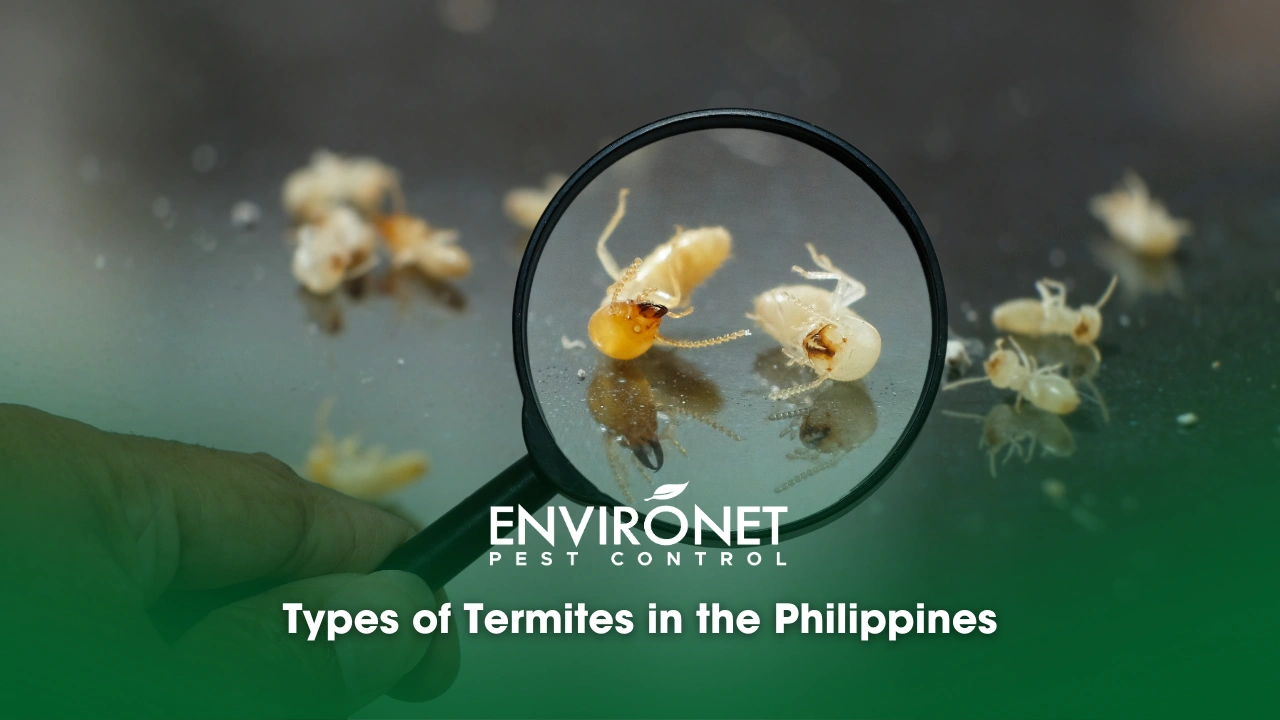
Types of Termites in the Philippines
Last updated on May 26th, 2025 at 04:11 pm
Termites are a common problem for homeowners and businesses in the Philippines. These tiny but one of the most destructive insects known can wreak havoc on your property if left unchecked. Subterranean termites, among the most prevalent termite types in the Philippines, are known for their destructive tendencies. They make their homes underground, occupying soil-rich environments that can include open fields, planter boxes, and even gaps within walls. The consequences of their activities can be severe, as they can cause extensive damage to a building’s foundation, walls, and floors.
In this blog, we will explore the four most economically important types such as the Philippine Milk Termite, the Los Banos Termite, the Luzon Termite, and the Mound-Building Termites found in the Philippines, and how to protect your home or business from their costly damage.
4 Economically Important Types of Subterranean Termites in the Philippines
Coptotermes Gestroi – The Philippine Milk Termite
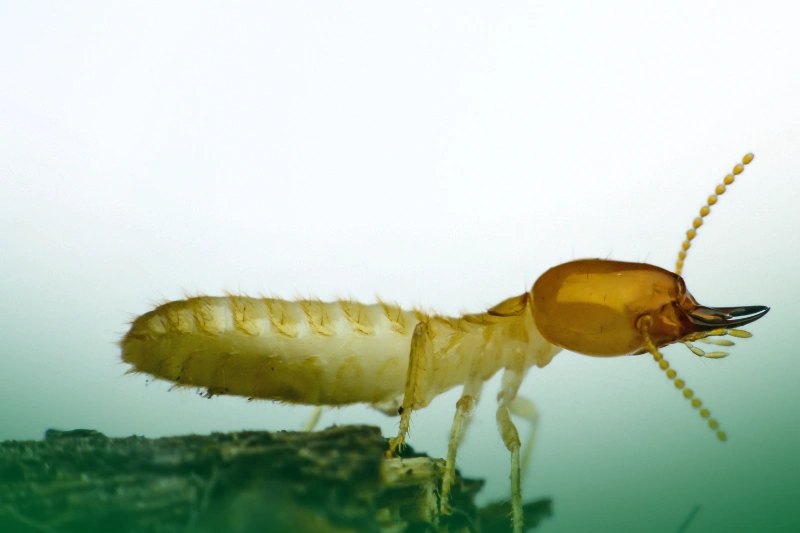
-
Distinctive Features: The Coptotermes Gestroi, commonly known as the Philippine Milk Termite, is identifiable by its unique head-drop shape. Learn the genetic relationship between Coptotermes Gestroi and Coptotermes Vastator.
- Nesting Habits: These termites establish primary nests, which can be quite extensive, deep underground. They also have a propensity for colonizing man-made structures.
-
Preferred Environments: This termite species thrives in regions with lower moisture levels and less humidity. They are often found in areas with drier conditions.
Microcertermes Losbenosensis – The Los Banos Termite
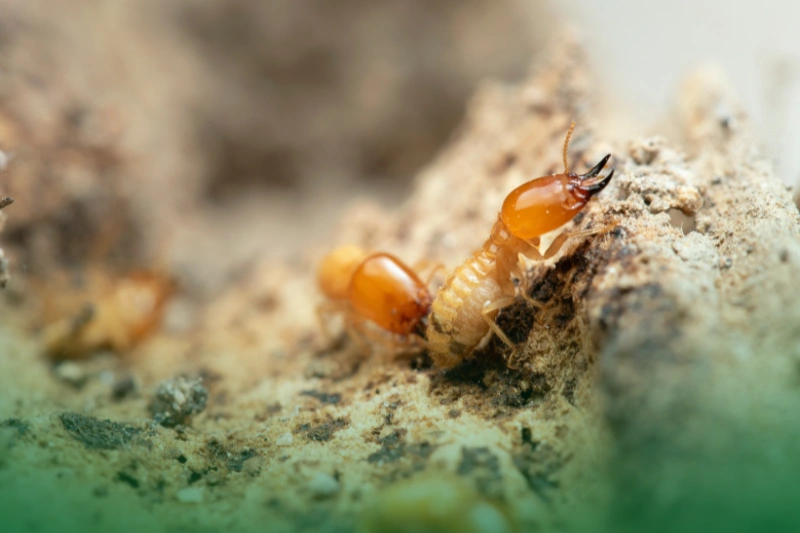
-
Origin of Name: Named after the town of Los Banos where they were initially discovered, these termites exhibit distinct characteristics.
-
Soldier Traits: Soldiers of Microcertermes Losbenosensis have long rectangular heads with prominent, elongated mandibles.
-
Nesting Behavior: Similar to other termites, they construct primary nests deep underground. However, they are versatile in terms of habitat and are also known to infest dead branches and tree barks.
-
Wood-Damaging Potential: These termites are notable for their tendency to target structures made from semi-processed wood.
Nasutitermes Lagunasensis – The Luzon Termite
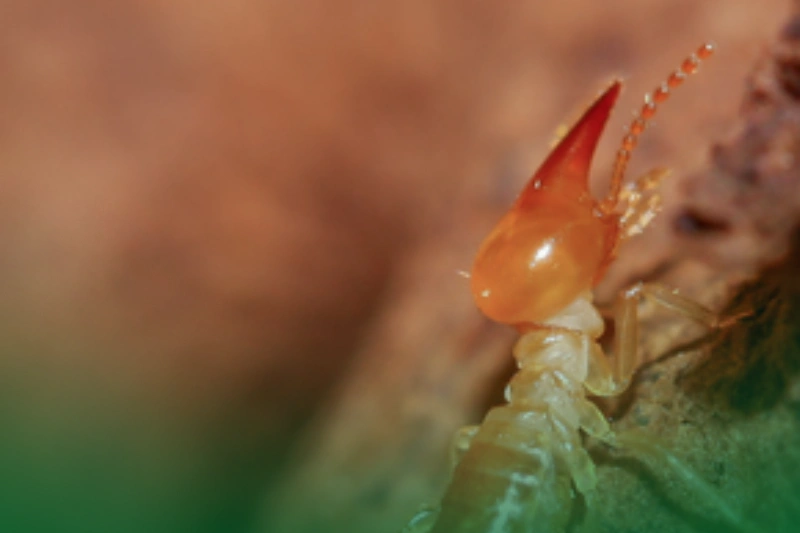
-
Origin of Name: Named after the Philippine island of Luzon, where they were first documented, these termites stand out due to their soldier caste.
-
Soldier Characteristics: Soldiers possess a unique head shape with horn-like projections, making them distinguishable within the termite family.
-
Habitat Preferences: Nasutitermes Lagunasensis are commonly found in semi-urban and rural areas, often invading both natural and man-made environments.
-
Mud Tube Construction: Like many termite species, they are proficient in constructing mud tubes, which serve as protective passageways.
Macrotermes Gilvus – The Mound-Building Termites
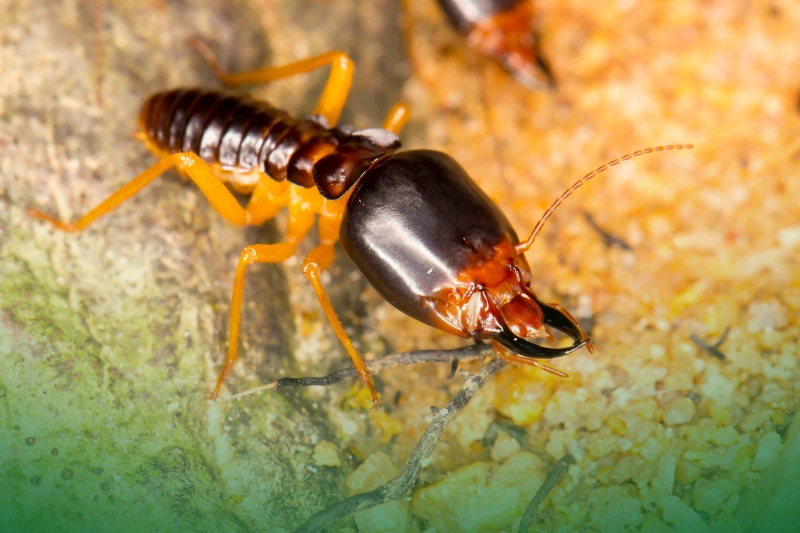
-
Mound Builders: These termites, commonly referred to as mound-building termites, are known for their conspicuous presence in termite mounds, often associated with the Filipino folklore of “nuno sa punso.”
- Tunnel Construction: They are adept at creating broad mud tunnels, some of which can become quite substantial in size. These tunnels are designed to fully envelop food sources, including wooden structures.
-
Habitat Range: Macrotermes Gilvus is not limited to urban settings. They are also prevalent in semi-urban and rural areas.
Understanding these economically significant termite species is of paramount importance for pest control professionals and homeowners alike. It enables them to identify potential threats and implement effective measures to protect wooden structures from the potentially extensive damage caused by these “silent destroyers.”
Conclusion
In a country as diverse as the Philippines, where natural beauty and man-made structures coexist, protecting our homes and businesses from termite infestations is a vital concern. There are different species of termites, but there are four economically important types that we’ve explored – the Philippine Milk Termite, Los Banos Termite, Luzon Termite, and Mound-Building Termites – each presents unique challenges and characteristics.
With an understanding of these silent destroyers, we can proactively shield our investments. Vigilant regular inspections, well-crafted treatment strategies, and effective moisture control measures all stand as crucial elements of termite prevention.
For over two decades, Environet Pest Control has been dedicated to delivering top-tier termite prevention and control services within the Philippines. Our experienced team comprehends the local termite species and their behaviors, enabling us to tailor solutions to your specific needs.
Remember, early detection and prevention are paramount when dealing with termites. Staying informed and seeking professional assistance ensures that our homes and businesses remain termite-free, preserving their structural integrity and value for years to come.
If you have any inquiries or require expert guidance in managing termite issues, don’t hesitate to reach out to us at Environet Pest Control. Together, we can protect your property from these relentless invaders.
Frequently Asked Questions (FAQs)
1: What are the common subterranean termites in the Philippines? Termites are a common issue in the Philippines, and several species can be found. Some of the most common ones include the Coptotermes Gestroi (Philippine Milk Termite), Microcertermes Losbenosensis (Los Banos Termite), Nasutitermes Lagunasensis (Luzon Termite), and Macrotermes Gilvus (Mound-Building Termites). Each of these species has its unique characteristics and habitats and is considered to be one of the most destructive termites.
2: What are the worst types of termites? There are different species of termites that are considered the “worst” types in terms of property damage can vary depending on factors like location and the type of wood used in construction. However, some species, like the Coptotermes Gestroi (Philippine Milk Termite) and Macrotermes Gilvus (Mound-Building Termites), are known for their destructive capabilities due to their colony size and feeding habits. It’s essential to address any termite infestation promptly, regardless of the species, to prevent extensive damage.
3: How many termites are there in the Philippines? There are different species of termites, but the exact number of termites in the Philippines is challenging to determine precisely due to the vast diversity of termite species and their distribution across the country. However, it’s safe to say that termites are a significant presence in the Philippines, with over 50 species adapted to various environments and habitats.
4: What termites eat the most wood? Among the common termite species in the Philippines, Macrotermes Gilvus, often referred to as Mound-Building Termites, are known for their voracious appetite for wood. They construct broad mud tunnels and mound structures, designed to fully envelop and access wood, including wooden structures. While other species also feed on wood, the feeding habits of Macrotermes Gilvus can result in substantial damage to wooden materials.
